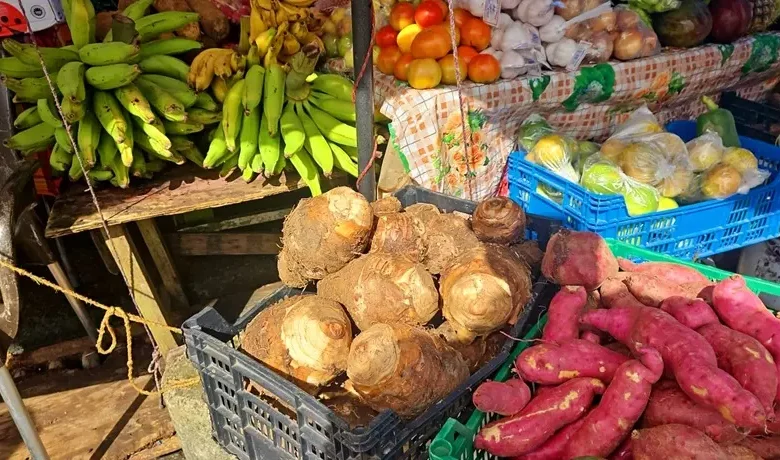Root Vegetables from Dominica

Root Vegetables from Dominica form the hearty, grounding base of the island’s traditional diet and are essential to its agriculture, cultural, and culinary heritage. Grown in the island’s fertile volcanic soil, these crops have sustained communities for centuries and remain central to everyday meals and national celebrations. From yam to tannia and cassava to sweet potato, root vegetables are symbols of survival, creativity, and local pride.
Root Vegetables is the Agricultural Backbone of Island Life
The cultivation of root vegetables in Dominica dates back to the Kalinago people, who relied on crops like cassava, yam, and sweet potato as staple foods. These plants thrived in the island’s mountainous terrain, which features fertile, mineral-rich soils and consistent rainfall. Farming methods passed through generations emphasize intercropping, organic fertilization, and hand tools — techniques still visible today in regions like Belles, Grand Bay, and Kalinago Territory.
Enslaved Africans brought knowledge of additional ground provisions and developed the one-pot meals that make these roots shine — including bouyon and provision stew. Post-emancipation, these foods became symbols of self-reliance and resilience, often grown in backyard plots or gardens on steep hillsides.
Today, root vegetables are promoted by the Ministry of Blue and Green Economy, Agriculture and National Food Security as part of efforts to strengthen food sovereignty and reduce dependence on imports.
Common Root Vegetables in Dominican Cuisine
These crops are typically boiled, roasted, fried, or stewed, forming the base of traditional dishes served at family tables, festivals, and national holidays. They are rich in fiber, vitamins, and complex carbohydrates, offering both sustenance and nutrition.
Most commonly used Dominican root vegetables include:
- Dasheen (Taro): Used in soups or boiled as a side; its leaves are key in callaloo.
- Yam: Dense and filling, often featured in bouyon or served with meat or fish.
- Sweet Potato: Roasted, boiled, or mashed; also used in desserts and pastries.
- Cassava: Grated for farine or baked into flatbread; central to Kalinago culinary traditions.
- Tannia: Mild, creamy texture; used in soups or fried into cakes.
- Eddoes: Small and starchy, used in soups or side dishes.
- Cush Cush: A local favorite with a dry texture, ideal for bouyon and bush cooking.
Cultural Importance and Everyday Use
Root vegetables are especially prominent during Creole Heritage Month, Jounen Kwéyòl, and Independence Season, when traditional dishes take center stage. During these times, dishes such as saltfish with ground provisions, smoked fish with yam, and bouyon with dumplings and root crops are widely enjoyed.
Events like the Waraka Séwinal Festival also showcase root-based recipes — from cassava flatbread to farine porridge — highlighting Indigenous influences still present in the diet. In addition, these vegetables play a central role in Community Day of Service, where villages prepare shared meals using homegrown produce.
Popular dishes using root vegetables include:
- Bouyon: A one-pot meal made with mixed meats, plantains, root vegetables, and herbs.
- Provision and Saltfish: Boiled roots served with salted cod sautéed in peppers, onions, and oil.
- Ground Provision Pie: A baked casserole with layers of mashed yam or sweet potato and vegetables.
- Farine Porridge: A breakfast made with cassava flour, milk, and spices.
Root Vegetables and Sustainability
In today’s climate-focused world, root vegetables are championed for their low environmental impact and ability to thrive in Dominica’s terrain without chemical inputs. These crops are central to climate-resilient agriculture and food security planning.
The Dominica State College, the Dominica Institute for the Arts, and the Division of Agriculture often collaborate on projects and exhibitions that educate students and farmers on the importance of preserving traditional crops.
They are also popular in the Roseau Old Market, where fresh provisions are sold daily — often alongside other staples like coconut oil, seasoning peppers, and cacao sticks. Their continued presence in kitchens across Dominica reflects a living heritage rooted in the land.




